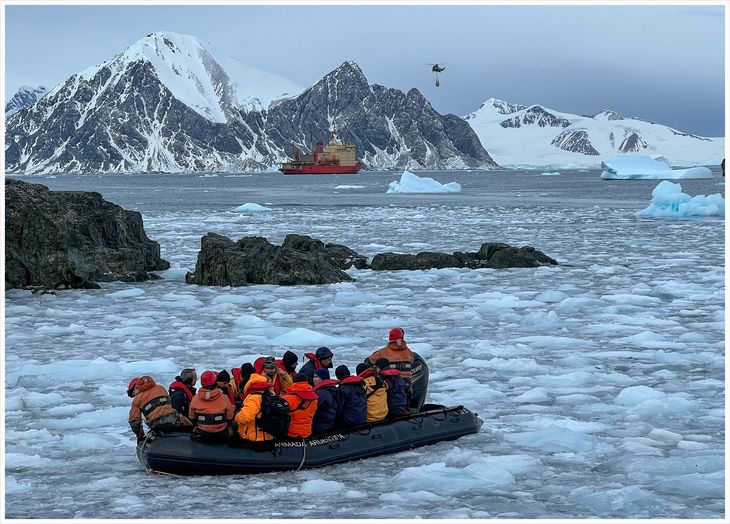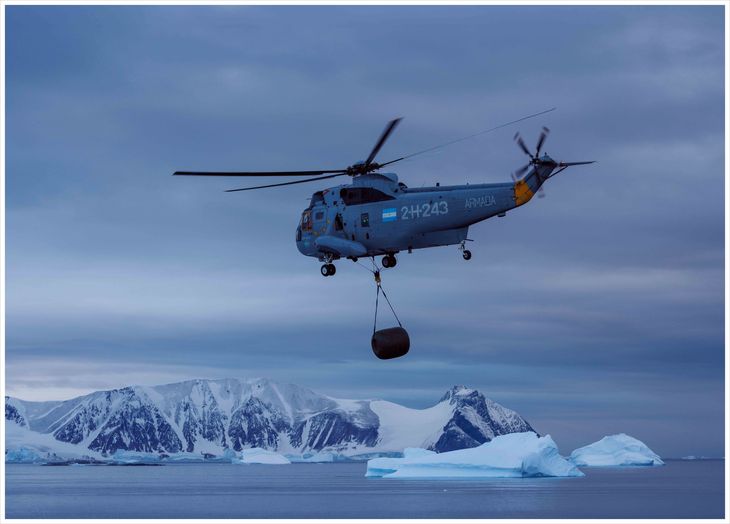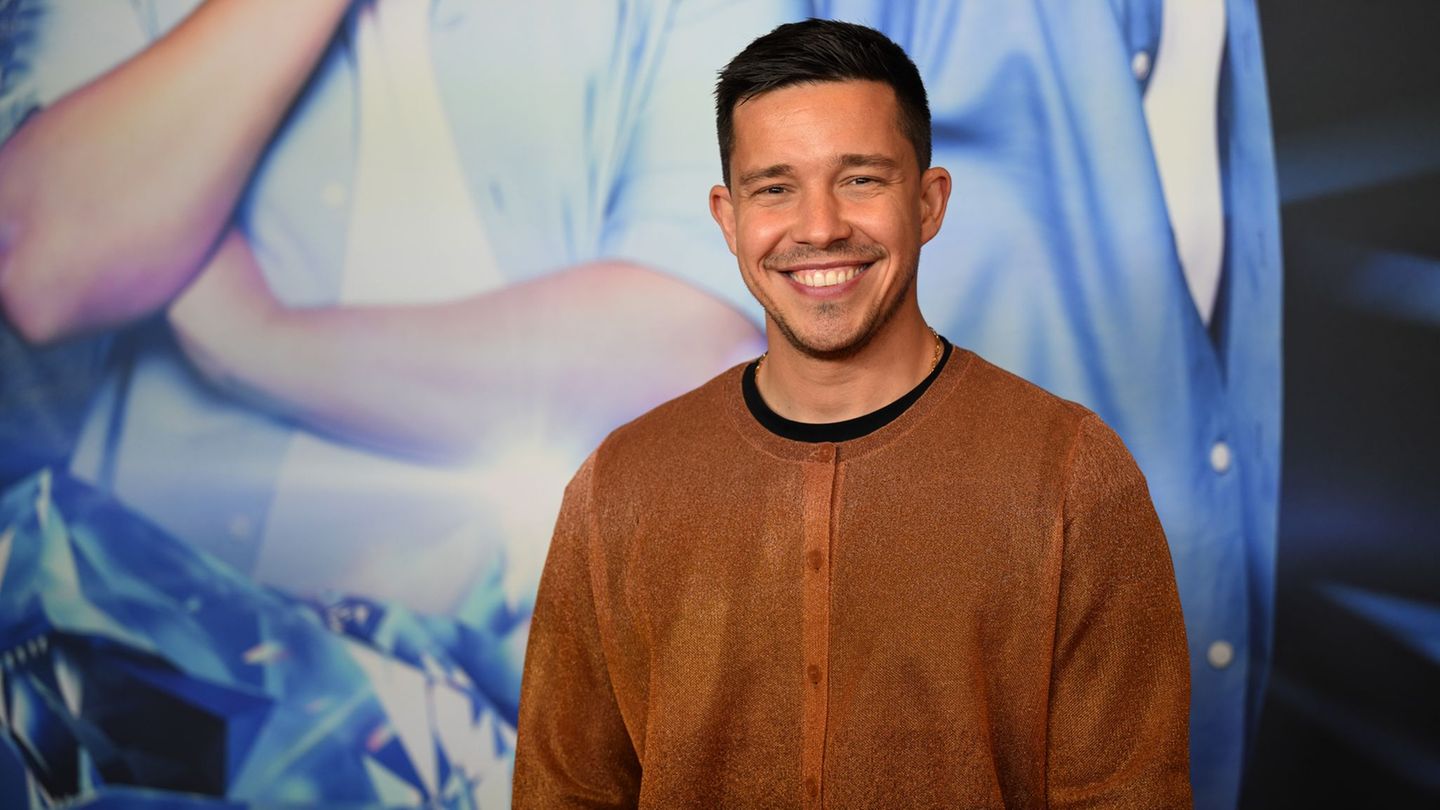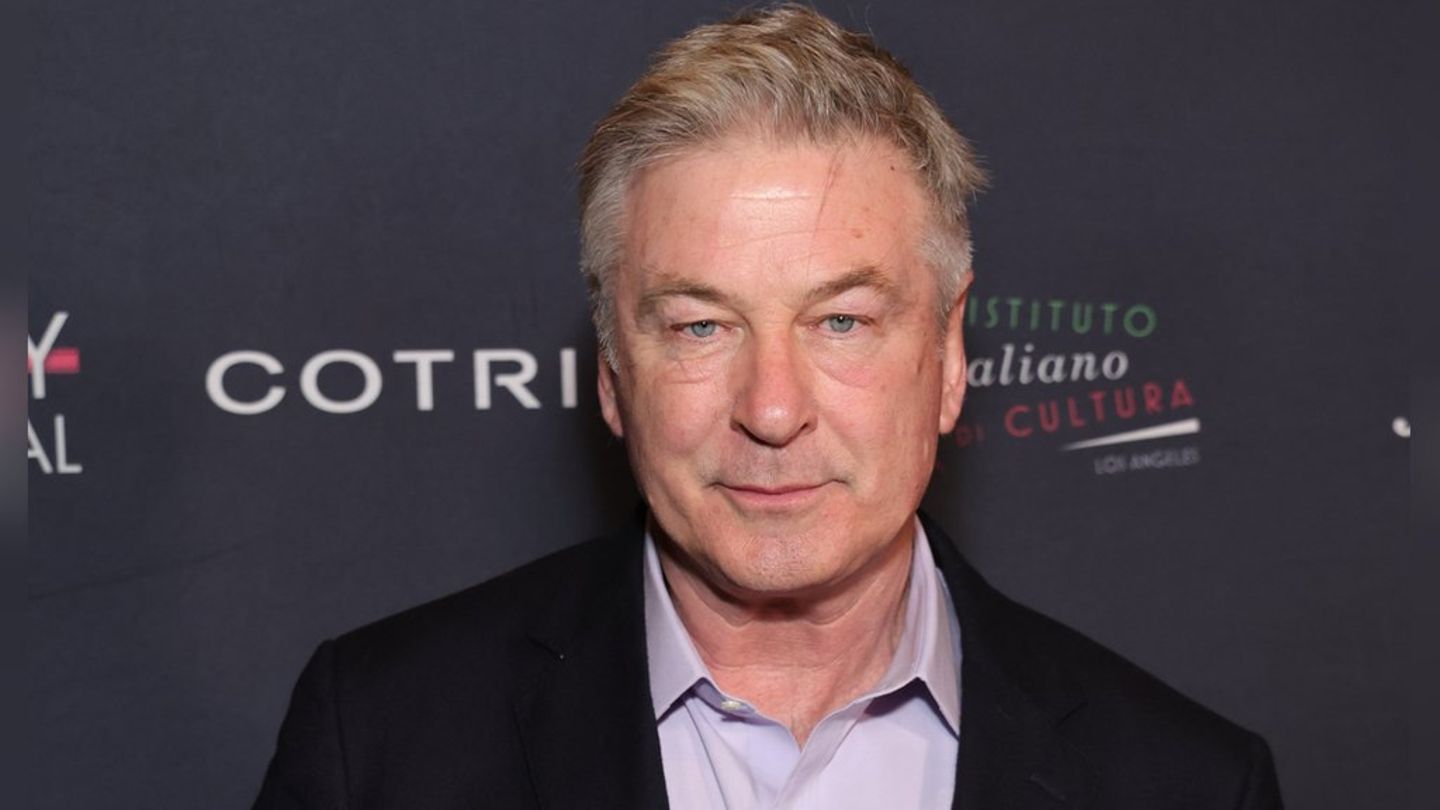“I took a trip to Antarctica in search of a landscape and I found something totally different”he told us then. “I was never an environmentalist in the militant sense of the word. But what I saw, the drama that I witnessed, imposed on me the need to document it. Environmental risk condemns not only man but all creatures, animals, plants. To the entire planet.”
Your companion on the new and more planned expedition, Lorenzo Poliis a photographer who has received several awards, and who comes from the Eye-V Galleryfounded by itself Marzottoa collective of Argentine, Italian, Brazilian, Portuguese and Spanish artists, where there are photographers who do artistic treatment with the camera. Eye V Gallerybased in several countries, organizes cultural exhibitions and events around the world, in areas ranging from private galleries to museums and art biennials.
We dialogue with her:
Journalist: How did this new trip come about?
Paola Marzotto: Since I returned from the previous one, I have not stopped for a minute proposing to return to Antarctica, in a more planned way. After obtaining permission to travel aboard the icebreaker Irízar, we embarked with Lorenzo Poli for about three weeks, between mid-March and mid-April of last year. On this new trip there were two different searches: first, one dedicated to nature, to the landscape. These images reflect the metaphysical landscape of Antarctica, but for the most part they are not part of the current exhibition but rather of a later one that I will do in Madrid, next spring, and then surely in Buenos Aires.
Q: What does the current one consist of?
P.M: It is a parallel search about the backstage of the trip. The Irízar’s mission is to supply the Antarctic bases before winter and carry out other tasks. On the journey we touched the bases Marambio, Carlini, Petrel, San Martín, Esperanza. Captain Recio, to whom we dedicate the exhibition, commanded the ship, and was the one who provided everything for us to travel. Today he is a friend. We, in some way, also fulfill a mission, since we choose to do activism through art.
11_4Z1A9536_75.5x54Winter Provisions at San Martín Base.jpg
Environmentalism and communication
Q.: You said you had never been an active environmentalist, but that you became more aware of the danger after the first trip.
P.M: It’s true. The issue never stopped worrying me, but I signed petitions, made donations or supported campaigns. He did things, but for something that he considered perhaps something far away. Only since 2020, with the pandemic, upon my return from the first trip, did I realize that what we are experiencing is an apocalypse. My conscience has changed since then: but I also realized, because I also come from journalism and I am used to social media, that people have no empathy or sympathy with environmentalists, except for the youngest.
Q: Let’s recognize that some actions of environmentalists, such as damaging works of art in museums, do not contribute to generating empathy.
P.M: Yes, it’s obviously not right. They are demonstrative, strong actions to attract attention. They do not contribute to their cause. I agree. They can attract a certain audience, those younger people that we said before, and nothing more. There are also actors, environmentalists and animal activists, like Joachim Phoenix, Leonardo Di Caprio, Jane Fonda who have always been there, and that doesn’t work either because people see them as celebrities who assume positions that need to be assumed. Nothing else. What is necessary is to transmit simple messages that convey what is necessary and urgent.
P.: Facilitate communication and put aside narcissism.
P.M: As it is. Communication is very important, and it is a very delicate topic. I also don’t think it’s useful to show disasters because the human eye, when it registers them, doesn’t want them either, it rejects them. I’ll give an example: I was in the Nagorno Karabakh region, in Armenia, a tremendously conflictive area where they had endured eight years of war. And while I was there, I didn’t take a single photograph of the horrors I saw. Not even one. My brain rejected it. It was like Gaza now.
Q: How did your career continue after your first exhibition on Antarctica?
P.M: I did an exhibition in Madrid, “My Giverny”, about very large water lilies that I took from the fountain of my Impressionist mother’s house, and also something Japanese, but I immediately began to prepare the expedition with the Irízar. Photoreportage is something else, I need to narrate with images, and what we did on this trip was a complex narrative.
Q: How was the trip aboard the icebreaker?
P.M: The conditions on the trip were comfortable, the crew very pleasant, but the images are not always easy to capture. The landscape is different too, because we went to the bases, but the ice problem is the same as the previous trip: there is no more, you can no longer walk on it because it doesn’t exist, and that is impressive. It appears a few times, hits the edges of the ship, but it’s not like before. And we are not talking about a long time ago but just ten years ago, when icebreaking ships, like the Irízar, broke ice to navigate. It’s alarming. How many times do we read it and not pay attention to it? That made a huge impression on me, even physically. It’s like a horror movie. Climate change is not just the speech of an actor who won the Oscar, it is an atrocious reality that is growing by leaps and bounds.
08_IMG_5257-Modifica_75.5x54_The Landing at Base San Martin.jpg

Q: Did you divide the task with Poli?
P.M: Yes. I was more in charge of recording the crew, the human part of the trip; the breaks, the moments of drinking mate, in addition to the landscapes, and he, as he is also an engineer and architect, focused more on the technical aspects of the ship, the engines. Some of my photos, as we had said before, the one of the metaphysical landscapes, will be in an upcoming exhibition.
Q: Why metaphysicians?
P.M: It is the comment I receive the most from people when they see my landscapes. We are visual, non-verbal artists, and that is the definition I receive most frequently. That pink light, which seems unreal, that illuminates Antarctica, transmits that metaphysical sensation. The sky and the sea have the same color, it would seem that there was no horizon. It is an aurora in which the light passes very cleanly: it is that landscape that awakens those sensations in the contemplator.
Q.: You have said that Buenos Aires could be the cultural capital of the world if it set its mind to it.
P.M: I have no doubt.
Q: More than a European city, or more than New York?
P.M: Let’s see. Rome does not exist, it is a province, and more so in terms of culture. Madrid is the capital of the movement, Paris is no longer what it was. London, yes, quite a bit, but it is not a cultural capital. New York was the cultural capital of the Western world, but it fell into decline. I’m not saying that Buenos Aires is, but it has that potential: there is no other city, for example, that has the theatrical activity of Buenos Aires, here there is a theater that is not found in New York. Furthermore, there are many very good artists. And making Buenos Aires the world capital of culture would take very little time. It’s a matter of proposing it.
Art and lineage
Paola Marzottoborn in Venice, descends from a family of lineage: she is the daughter of Humberto and Marta Marzotto, and granddaughter of Count Gaetano Marzotto, founder of one of the most important textile companies in Italy. Her mother became the inspiring muse of the paintings of Renato Gutusso. “Guttuso was a communist, a great friend of Pasolini whom I also knew as a girl,” he recalls. “In 1941, he painted his most famous and revolutionary work, ‘The Crucifixion’, reminiscent of Picasso, in which one of the soldiers who torture Christ has the features of Hitler. It was an almost cubist work. We had an apartment in Rome, in Piazza di Spagna, and on the other side of the street lived another great painter, Giorgio de Chirico. At night, from my window, I watched him paint. My childhood, my youth, was truly privileged”.
In her career as a photojournalist, Marzotto was in the Philippines during the filming of “Apocalypse Now”of Francis Ford Coppola. “We lived there in the jungle for several months,” he says. “At that time, in the late 70s, we only worked with 36 rolls of celluloid, you had to have a very good eye to take the photos because later the scenes were not going to be repeated. “I was photographing the entire part of the Walkyria Parade, the part of the helicopter attacks, with Robert Duvall.”
Source: Ambito
I am an author and journalist who has worked in the entertainment industry for over a decade. I currently work as a news editor at a major news website, and my focus is on covering the latest trends in entertainment. I also write occasional pieces for other outlets, and have authored two books about the entertainment industry.




